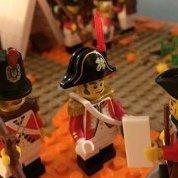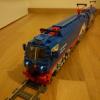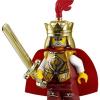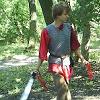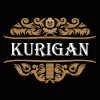Search the Community
Showing results for tags 'snot'.
Found 56 results
-
Here we are! My very first UCS-style model is finally out, and it's a big one: the mighty Acclamator-class assault ship from Episode II: Attack of the Clones. Made of 5,152 pieces, at 72cm (28,4′′) in length, weighing 3,2kg, it's by far my biggest project to date. This 100% SNOT build was painstakingly modeled to accurate reference material, from exact profile dimensions to surface detail on top and underneath. The underside was also full of geomertic challenges due to its numerous angles and shapes. I wanted to include essential functionality like detachable landing gear for landed display, and openable hangar doors with boarding ramps that slide down to reach the ground. The ship also features a removable stand, as well as a hidden handle to make switching display modes easier. In addition to the "standard" version with Republic markings, I also made a "class-II", all-gray version, which comes with its own instructions and parts list. The Acclamator is technically one of my oldest projects: the initial version of the design was made right after the Torment in 2021, but I eventually shelved it as I wasn't truly satisfied with it. Since then I had so many requests for this ship that the idea of making a new version progressively grew on me, until I took the plunge in late January 2024. Starting the new design from scratch, I decided to scale it exactly to Martin Latta's fantastic UCCS (Ultimate Collector Series) Venator, which happens to be in ~1/1000 scale. So I hope my Acclamator will, along with Latta's Venator, form the basis of a bigger 1/1000 scale BrickVault Republic fleet in the future! ► Instructions for the Acclamator are available at BrickVault! More pictures on my Flickr page.
- 8 replies
-
- lego
- acclamator
- (and 12 more)
-
My first ever true Minifig-scale ship is finally here, and what better model to start with than the sleek BTL-B Y-Wing from The Clone Wars series. Being 23 meters long in universe, this accurately Minifig-scaled MOC is quite a unit: 57 cm long, 1,6 kg, 2,954 pieces. It can accommodate two clone pilots - one in the cockpit, the other in the turret. The model is available in three versions: classic (yellow), Rex's (blue), and red. With a spaceship of this kind, the main challenge is to achieve a level of smoothness and fluidity that gets as close to the original as possible. Using the Battlefront II model as a reference, my goal here was to closely match all key features of the ship: the subtle downwards angle on each side of the body, the curvy and tapered front section, the continuous yellow stripes that run across the entire fuselage, the intricate middle-section... and for such a smooth ship, going full SNOT (from top to bottom!) goes without saying. The T-shaped body of Y-Wings usually allow for simplistic structures, but in this case, figuring out the internals was one of the truly head-scratching parts of the build, since I had to properly incorporate angled fuselage assemblies and make a proper interior for Minifigs. Even so, the model is very swhooshable and can be grabbed from the underside, from the rear or even from both wings. Each color variant is accompanied by its specific set of instructions and parts list, giving you the freedom to build the one you prefer. The ship has two display modes, "in-flight" with its fully removable stand, and "landed" with retractable and easy-to-connect landing gear. The swooshing can begin. ► Instructions for the BTL-B Y-Wing are available at BrickVault! More pictures on my Flickr page.
- 10 replies
-
- minifig scale
- minifig
- (and 21 more)
-
"Commander Cody, prepare the gunships for ground assault!" Let's give the Midi-Scale treatment to another timeless ship: the LAAT Gunship or Republic Gunship from The Clone Wars. Being a fan of the sleek and flush Clone Wars era design, I thought this variant deserved more attention, especially in Midi-Scale. This Midi LAAT/i consists of 1,015 pieces, measures only 22cm (without guns), and is accurately Microfig-scaled. It features a fully SNOT look, openable front doors, and a removable stand that can be tilted to taste. Design-wise, this ship was full of challenges, with lots of subtle angles and curved surfaces everywhere. Shaping the front section wasn't an easy task at this scale, as well as adding that crucial touch of lime green without any stickers. All of this resulted in a pretty intricate structure, especially for the front section. The angled rear section of the body features other details such as missile belts, exhaust slats and tail cannon. The underside of the ship is also fully SNOT-built. Initially, all four doors could be opened, but I chose to remove the less useful rear door mechanism for a smoother, easier building process. ► Instructions for the LAAT are available at BrickVault! More pictures on my Flickr page.
- 8 replies
-
- midiscale
- midi-scale
- (and 13 more)
-
Hello everyone 1- I hope this subject is in the right place. 2- Sorry for my bad english I think you all have at one time or another during a construction, wanted to have a room that does not exist to carry out your project. So, you've probably imagined several over the years. 1- I imagined myself to create several in recent days (others to come) You can find them on Flickr HERE you can react on what you see. 2- Would you like to propose some already, in 3D or other? I opened a group for: - the techniques, - tutorials - new coins 1 month ago on Flickr HERE 3- Do you have any ideas? => Could you describe by embellishing an image that you would like to have? I can try to create on request if my limitation 2D (photoshop) allows it. By the way for your information, I also realized baseplates that are on Flickr. I would like your opinions, your reactions, your proposals ... TYVM Some exemples:
-
The fastest hunk of junk in the galaxy just joined my Midi-Scale ship collection! Here comes the Millennium Falcon from Episode IV – A New Hope. Made of 2,178 pieces, measuring only 34cm and weighting almost 1kg, this compact yet dense Falcon was another unique challenge at this scale. After seeing some great-looking Figscale MOCs of this tricky ship, I couldn't resist making a Midi version. With this design, I took a different approach than most other Falcons out there, and wanted it to look as sleek and gapless as possible. This resulted in a pretty elaborate and unique mix of paneling techniques that involved a lot of SNOT building. One of my priorities was to faithfully reproduce the curved saucer shape on both sides of the ship, and not only on top. As a result, the build features all the details and shapes of the original 1977 studio model, from top to bottom. The overall thickness of the ship was another concern. I wanted it to be as thin as the original, while being able to sandwich some tasty greebles and even the hyperdrive engine bay inside the saucer. The Falcon has two display modes, "in-flight" with its canted stand, and "landed" with easy-to-install landing gear. It also includes a working ramp. ► Instructions for the Millennium Falcon are available at BrickVault. More pictures on my Flickr page.
- 22 replies
-
- midi scale
- snot
-
(and 7 more)
Tagged with:
-
"This is where the fun begins!" My latest ship from the Prequel Trilogy has arrived, and it surely was a lot of fun to make: here's Obi Wan's Eta-2 Actis Interceptor from Episode III - Revenge of the Sith and The Clone Wars. This small unit consists of 281 pieces (stand included), and has one major feature: true Minifig scale! There's a handful of beautiful MOCs of this ship out there already, but most of them are based on the huge cockpit piece from the playsets, so they're drastically oversized. So here I am with a, dare I say, more accurately scaled version. It does come with a drawback, you guessed it: you can't put a fig inside. A bit ironic I know, but I chose to go for a brick-built cockpit in order to get as close to the original design as I could, prioritizing accuracy over playability, as usual. The wings were pretty challenging given the ridiculously small scale, and my goal was to have them as thin as possible without compromising the SNOT look. I'm quite happy with the result and I think this makes a nice little display piece. It's also very swooshable despite the intricate wing design. I'm usually not a fan of stickers, but I thought this one deserved some sweet markings. I used the sticker sheet from the playset - it is included in the parts list. The color scheme can be changed to red with only a few part swaps (see last page in the instructions). ► Instructions for the Eta-2 Actis Interceptor are available at Rebrickable. More pictures on my Flickr page.
-
Hi everyone, My Midi-Scale TIE collection expands again with a new TIE starfighter: the TIE Striker from Rogue One. Made of 730 pieces, this TIE Striker features a fully SNOT surface, a smooth cockpit section, and includes blaster cannons below the cockpit. Design-wise, this ship really felt like a natural continuation of my previous TIE Reaper MOC. Although being almost Minifig-scaled, (hence the Midi-scale) this ship obviously doesn't have any interior due to the techniques used and small space allowed for the internal structure. Due to the front-heavy nature of the design, a rather long (but very simple) stand had to be made in order for the ship to remain perfectly steady and horizontal. The overall build is pleasantly sturdy for a display model and can be moved around easily. Hope you guys like it! ► Instructions for the TIE Striker are available on Rebrickable or via email at flyinspace.mocs@gmail.com More pictures on my Flickr page.
- 5 replies
-
- starfighter
- lego
- (and 11 more)
-
Hey everyone, This is it! After the Torment, the Negotiator proudly joins my Midi-Scale capital ship collection, engineered with the same philosophy in mind: maximizing accuracy, features and proportions of the original model in a moderate size. Made of 3,145 pieces, 68cm (27 inches) long, weighing 1,6kg, the Negotiator is a medium-sized, modular Venator-class Star Destroyer holding on a single, unique Lego stand. This piece of work is the result of weeks of designing, engineering and intense testing. I wanted the Negotiator to be dense, massive-looking, intricate and packed with detail, while being compact and manageable. Building at such a scale, I had to take into account every possible constraint (balance, weight distribution, structure sturdiness) while never compromising any aesthetics (SNOT look, thickness, greeble). The Negotiator features every intricate part of the studio model: turrets, hangar and docking bays, engines, bridge, greeble... with utter attention to detail and proportions of the original ship, as seen in the Clone Wars movie. Hope you like it! ► Instructions for the Negotiator are available at Brickvault. More pictures on my Flickr page.
- 28 replies
-
- build
- clone wars
-
(and 8 more)
Tagged with:
-
As an absolute fan of the original trilogy, I had to build more Empire ships in Midi-Scale. I decided to start with my favorite TIE model, the TIE Advanced. This 496-piece TIE Advanced features a fully SNOT and detailed surface. It also includes rear engine thrusters at the back of the cockpit dome. Most importantly, being able to design smooth but razor thin wings was the key to making this build look proportionate and realistic. The same applies for the rear section of the fuselage which, being only 1 tile-high, ended up looking just a thin as the original prop model. Logically, the ship scales well to my previous TIE Reaper - I'll keep exploring more of these in the same scale, and maybe one day have a whole fleet of Midi TIE ships! ► Instructions will be available at Rebrickable soon. More pictures on my Flickr page. ♥ Patreon ♦ Instagram ♦ Rebrickable ♦ Eurobricks ♦ Reddit
- 3 replies
-
- episode iv
- lego
- (and 14 more)
-
"I like your ship. She's a classic. Razor Crest, am I right?" My Midi-Scale collection keeps expanding with more than a classic piece of spaceship, the legendary Razor Crest from The Mandalorian. Made of 1,230 pieces, 30cm long, this baby ST-70 Gunship has a total of... zero stud across its entire surface, making it a true 100% SNOT build. At such a size, replicating all the complex angles and features of the original model required advanced SNOT techniques. I really wanted to push the limits of what could be done at such a small scale. Capturing the tapered body also required making a very compact 2 stud wide structure that could still hold everything together securely. The ship has two display modes, "in-flight" with its canted stand, and "landed" with easy-to-install landing gear. Hope you like it! ► Instructions for the Razor Crest are available at BrickVault. More pictures on my Flickr page.
-
Hey everyone, I'm glad to present you my latest Midi-Scale MOC, the TIE Reaper from Rogue One. The TIE Reaper drew my attention when I discovered Doug Chiang’s wonderful concept art of the ship. The typical empire-like, aggressive and angular look of it instantly reminded me of my favorite vehicles from the movie. The main features of this design are: fully SNOT build from top to bottom, accurate proportions, studio model / prop look, removable stand and working ramp. Getting all the very complex angles and shapes, while maximizing the SNOT look, led to a very intricate Midi-Scale build. My main goal wasn’t “swooshability”, but making a convincing, display-only build. Although not intended for play, it can be easily moved around with or without its stand, and safely held from below. ► Instructions for the TIE Reaper are available at Rebrickable or via email at flyinspace.mocs@gmail.com More pictures on my Flickr page.
-
I got started on a new pirate/imperial MOC yesterday evening and thought I’d make a little tutorial as I went about how to make a SNOT (Studs Not On Top) base. This is how far I got in about 90 minutes, will post again when I make more progress. First off, credits to @Ayrlego for showing me how to make this sort of base originally with his Watermill WIP thread. ------------------- STEPS: 1. Make the shape of the base with plates. You want to end up with a 2-layer thick shape made of plates. I think it looks most natural if you only ever shift the edge border by 1 stud at a time ------------------- 2. Once you have a 2-layer plate, add a layer of bricks on top, but leave a 1 stud empty space around the edge. That’s where SNOT bricks are going to go ------------------- 3. Place SNOT bricks around the outside. On the corners, use SNOT bricks with 2 studs on adjacent sides. If you need to buy SNOT bricks in bulk, yellow ones are pretty cheap on BrickLink. When done, you’ll have a base that is 5 plates tall (2 plates + 1 brick). That 5-plate height is important, because 5 plate height is exactly the height of a 2x plate on its side ------------------- 4. Attach 1x and 2x plates to the SNOT sides. You’ll need to build up the sides with more plates to make the border transitions smoother. ------------------- 5. Place plates on top of the base, covering the SNOT bricks. This will start the visible part of your building base and also make the SNOT bricks secure. ------------------- That’s as far as I got in one 90-min sitting! I love that this SNOT base is super sturdy, which comes in handy when I'm moving it back and forth from my building area to a kid-proof storage area. I also love that imagination is the only limit when it comes to shape! Hopefully this little tutorial helps others get started with it.
-
Hello all I want to show you some techniques I used for my MOC of the ÖBB Nightjet. Since this train consists of several different cars from different former owners, there’s quite some variety of cars. I want to show you the most important building techniques used for cars based on the UIC-X car and the Eurofima-car. There are two links to the respective German Wikipedia page. UIC-X Eurofima These two types of cars can still be seen on the major European railroads on InterCity lines and were also used on the legendary TEE Rheingold. So, with changing the colours and some details, a lot of cars can be built using the same techniques Now the first part I show you are the windows, since the original ones from LEGO only come in limited colours and are quite expensive: http://UIC-X by StefanEris, auf Flickr http://Übersetzfenster 1 by StefanEris, auf Flickr http://Übersetzfenster 2 by StefanEris, auf Flickr http://Bautechnik Fenster by StefanEris, auf Flickr The windows are built using SNOT-techniques and using plats with handles and plates with clips, one can achieve different spaces between the windows, as seen on the picture with the one stud wide window. This technique can also be applied to 6-wide cars. Also note the doors, here a minifig hand is used to model the door handle. (I’ve seen this idea on other MOCs, thanks for the inspiration) The roof is made with the slope curved piece and a lot of hinge plates. The next car is an SBB Eurocity car, which is based on the Eurofima-car. The story behind this car is, that several railroads wanted to order the same car with the advantage of paying less per car. Since the more were built, the less one single one would cost. In the end not everything worked like the railroads wanted, but a lot of cars are still based on the Eurofima-car. Also the Swiss Eurocity car you see below. The most challenging part here was the roof with it’s longitudinal beads (?) (please correct me if someone knows the right translation of “Längssicken” here, they are used to reinforce the roof). To get this shape right, I used tiles and hinges. On the other hand, the windows here are quite simple. There’s only a three studs height stripe (snotted) with trans black and black brick. http://EC-Wagen by StefanEris, auf Flickr http://Dach by StefanEris, auf Flickr http://Dach 2 by StefanEris, auf Flickr I hope I could inspire someone or help you to build some trains, even if train windows and doors aren’t widely available in the wanted colours. Stefan Edit: Added another picture of the roof technique.
- 10 replies
-
<p>Hello Everyone, I am pleased to share with you my latest MOC. It was a very challenging build as I used for the first time a lot of SNOT techniques, including the base. This was the best solution to have the log bricks of the tower alligned horizontally and for the build to be sturdy. It is inspired from the Belgian comic "Les Tuniques Bleues" (In English, The Bluecoats"). Fort Bow appears in half a dozen albums at least. It is also the first time I am using photoshop to edit the background of the pictures.Let me know if you like this mean of sharing pictures. Anyway, here is my version of FORT BOW: The back of the fort: And here is a page from one of the albums where Fort Bow is appearing: You can go on my Flickr to see more unedited pictures.
- 16 replies
-
- Union Soldiers
- SNOT
-
(and 1 more)
Tagged with:
-

Functional Wind-up Robot
Eddie_Young posted a topic in LEGO Technic, Mindstorms, Model Team and Scale Modeling
If you remember those little clockwork robots, which used to be toys and are now prized collection articles, than you will surely recognize my representation! I've been working on this for some time now and I'm proud to say that this robot walks as well as the real thing! It uses two pullback motors, a couple cogs (gears) and 623 LEGO elements to achieve (I only hope you agree ) both good looks and great functionality. The mechanism with the incorporated motors is made to fit exactly into the case and the case comes off all in one piece (I like my modularity). The mechanism for the legs is the most simple thing ever but making it was as complicated as any of my larger MOCs, because balance played such a vital role in all of it. You can still see it wobble as it walks (I find the wobble quite indearing though ) and a lot of work went into keeping it from falling when it does. I like to think this is my best work yet, so I hope you like it just as much enjoy!!! My Flickr gallery -
'Dannebrog falling from the sky'. According to legend that's what finally happened after the Danes had long been praying for victory during the Battle of Lyndanisse, Estonia in 1219. It also holds the record as the oldest continuously used national flag. Religion and nationalism aside it's my birthday tomorrow and since we Danes fancy to display our flag on such occasions I thought I'd give one of my older LEGO building techniques another run with a bit more context. As most of you already have gathered, it mainly consists of the piece 'Technic, Axle 2 Notched' in red and white, framed by SNOTed slopes, both inverted and not.
- 2 replies
-
- flag
- danish flag
-
(and 7 more)
Tagged with:
-

Advanced SNOT / Technique Help - Pyramid corners in 0.5 or 1 LDU steps
ShireBrickz posted a topic in General LEGO Discussion
Hi Community, I'm trying to resolve the construction of a pyramid type corner without using slopes, with each layer in two directions only stepping back either 1LDU or 0.5LDU whilst maintaining vertical alignment of face tile joints. Photos show what I'm trying to do but failing to keep the vertical tiles in alignment. Ahhh. This is doing my head in. -
I've been looking at Mike Gallagher's SNOT roads, in particular this one because it joins two roads at a ~45 degree angle: http://gallaghersart.com/gallery/view/category/roads However, as you can see in the image I made below, it is not *exactly* 45 degrees. Has anyone come up with a working method of joining SNOT roads at regular angles? Thanks.
-
[Edit: September 2nd 2016] I have finally gotten around to extending this model in the direction of Kongens Nytorv and Nyhavn which are two very popular destinations of Copenhagen for both tourists and the citizens. I'll put a picture both here and also with a comment later in this thread. Lots of close-ups of the extended part in the Flickr gallery [Edit: 2014] I have now added a whole bunch of pictures both here and on flickr. If you want the historical, explanatory discription for the different buildings you will have to visit the flickr photo set. And feel free to leave a commend here or there :) Original message 2014: I'm a member of Danish LUG Byggepladen and I'm a bit of a rare poster in this wonderful forum, but here's my short story: Over the last few years one thing let to another and much later I'm finally done with my model City of Copenhagen (Denmark). It is a microscale, sporting a really twisted micro snot mosaic road system. For lack of better I have chosen to call it OAMR System — Oblique Angle Micro Road System. You won't get a more LEGO System compatible micro snot road system for this scale. I would personally love to see some different micro's (just as a contrast to those otherwise beautiful Micro Skyscraper Square Grids), perhaps depicting one of the many awesome city plans of the world or just something you make up yourself :) And once again, here is the whole photo set on flickr. The photo from LEGO World Copenhagen 2014:
- 51 replies
-
- copenhagen
- denmark
-
(and 6 more)
Tagged with:
-
It's finally time for me to present to you my newest MOC: The Sideways Building Designed between September 2016 and January 2017, this MOC has roughly 4500 pieces. The building's name is a bit tongue in cheek and references the fact that most of the frontal facade is built using elaborate SNOT techniques. 1x1 bricks are used sideways and offset by exactly half a brick's height to the ones above and below to create a new kind of masonry effect. The basic idea was this: This technique was not easy to pull off and made the design and build very challenging. But without further ado, here are the pictures - More images are, as usual, available at flickr. The intensive snotting on the facade also leads to the absence of the usual 'stripes' that separate the individual floors of modular buildings (where tiles and plates are used at the top & bottom). Still, my building is fully modular, as this picture shows. The floors can also be interchanged freely (except for the roof, of course). The only parts of the front facade built with studs on top is the bottom-most layer of bricks, all windows, and most of the roof. Everything else has studs facing left, right, towards you or even downwards. This also creates weird offsets - the left and right windows on the upper floors are offset by 2/5 the width of a stud! (or 3/5, depending which way you look at it...) A closer look at the masonry detail. View from the back - this is built the old fashioned way with studs facing upwards. Let's take a look inside. The left hand part of the ground floor is taken up by a pizza parlor. It has two tables for patrons to sit, but it is mostly aimed at take-away (and possibly delivery). A young couple is enjoying their pizza. Pizzas are baked in a stone oven. On the other side, there is a travel agent. As usual, the walls are decorated with posters showcasing possible travel destinations. Moving up to the first floor. A couple lives here. Behind the living room, there is a small kitchen (the wall inbetween was removed for this photo). A look inside their bedroom. The green door leads to the bathroom. A picture of that can be seen on flickr. Moving up to the second floor...The owner of this flat had the wall separating kitchen and living room knocked down to create a combined living room and kitchen. The center counter with two bar stools looks very inviting. Seems like the cat found something on the floor... Note: More pictures of the second floor apartment are available on flickr. Moving up one final time, we take a look at the stairwell... As attics go, this is actually still pretty orderly...except for the giant cobweb in one corner. Apparently, someone also used the attic for his painting at some point. That's about it Again, more pictures can be found at flickr. Looking forward to your thoughts & comments! Cheers!
- 14 replies
-
- modular
- travel agent
-
(and 3 more)
Tagged with:
-
Hi guys, after doing a large build for the SJ17 I did not have much motivation for a new large project immediatly. Then I remembered how I have many uncompleted Age of Mitgardia builds left to do :P Here is my take on the tower phase one! My first focus was on the rockwork, and when I started the tower I had no idea where it was going, but im quite pleased with the result.
-
Two weeks ago I finished an article about modern train fronts and their LEGO-interpretation in Hungarian, now I finished with translation to English so I want to share it with the community. Please note, that my English is not the best since it is not my native language, and the building techniques and part usage in this article can't cover every solution, different trains may need different ideas. I hope this article helps beginner to get started with their own designs. https://drive.google.com/file/d/0B2pGVpZyXf5hdDBDMnJFOVlkeDg/view
-
Hello everyone! Today i present you my latest and most complex MOC: the AC Cobra 427. The challenge was to create a medium sized car with a complex body structure and add as many technic features as possible making it look good, functional, playable and robust. After going through lots of difficulties i have finally managed to get it done. Here is the result: It features the following: 1. working steering via steering wheel + adjustable steering wheel angle 2. front and rear independant suspension 3. rear differential 4. working V8 piston engine 5. a lever that opens the hood 6. opanble doors 7. openable trunk 8. solid structure -Images removed- More photos on Flickr https://www.flickr.com/photos/27805688@N05/ P.S sorry for my bad photographing and editing skills.
- 20 replies
-
- snot
- classic car
-
(and 8 more)
Tagged with:
-
Presenting my latest “master work” His Majesty’s Sloop Reckless. She has been built and commissioned to replace the aging Ramcat. The new design takes inspiration for HMS Alert and other such cutters. She remains a 10 gun sloop but is now in a more appropriate fashion for a commissioned man-of-war shedding her stern gallery and overly large bowsprit. Her scale has also increased to something much more like Mini-fig scale. This renewed effort was brought on when an opportunity to participate in an exhibit of “Toys as Art” at the Morris County Museum, NJ came along. Before committing, I made a thorough inspection of my fleet to determine readiness and completion. After careful consideration I simply found Ramcat wanting. She was a prototype that just kept going and was never intended to be finished. What started as an attempt to correct a few issues, quickly turned in to a complete tear down and rebuild. The second version was about as hapless as the original though and that too wound up scrapped. For this latest iteration I went back to concept and found new inspiration. Models of Alert captured my interest and I found a lot of useful and free information to help me make a most accurate interpretation. Alas, limitations of the scale and medium have caused me to deviate from an exact replica, as is quite typical. The wealth of information on Alert and sloops of her type though made finding reasonable alternatives simple and easy. At the time of this posting, we are about two weeks from our deadline and thus two weeks from completion. She is as brick built as all considerations can make her until her rig is in place and any subsequent needs become apparent. Because she is a replacement for Old Ramcat, Nick and crew will be shifting into Reckless to resume their normal duties. Her construction technique is the same I’ve been touting for some time. This time around, however, I was able to further refine my method and take into account needs and limitations previous versions did not. Though I did try to keep the “illegal” stuff to a minimum there are still a few element which may make purists cringe. Sometimes that’s just what it takes when you’re trying to force the system to do things it was never intended to do. Thanks for taking an interest. Do check back as updates with greater detail, better images, and perhaps a bit of story worked in, are forthcoming. Go ahead and talk her up, share her around and ask me anything. If it’s not obvious I’ll tell you, I love to talk about this stuff. For more images check out Reckless here. To take a look back at her predecessor, Ramcat, click here.


